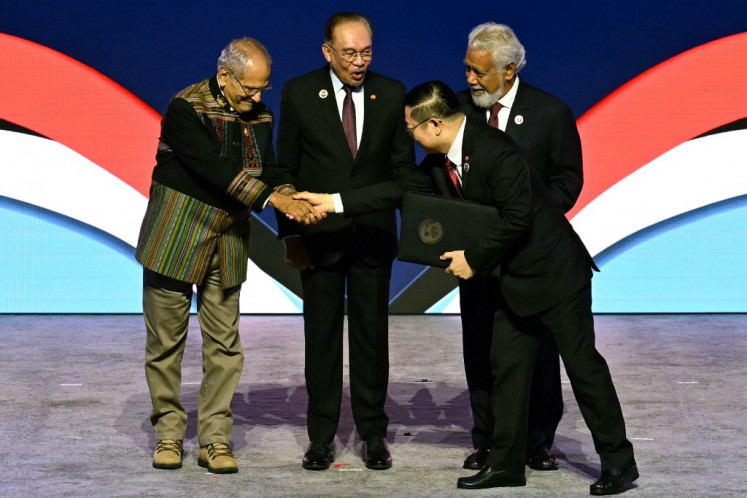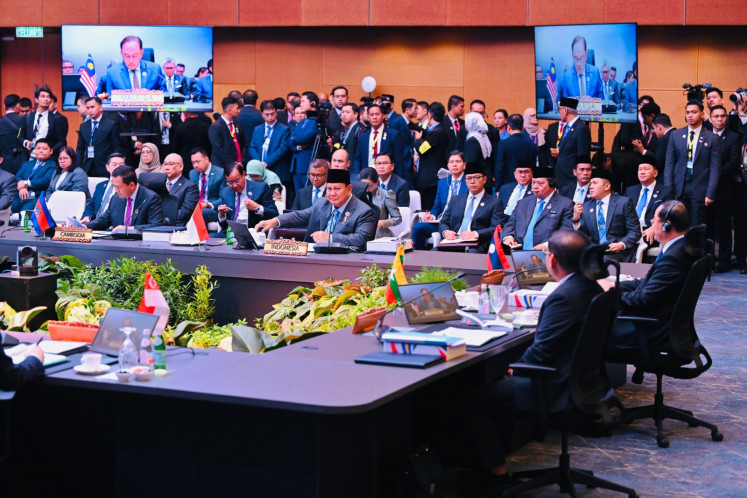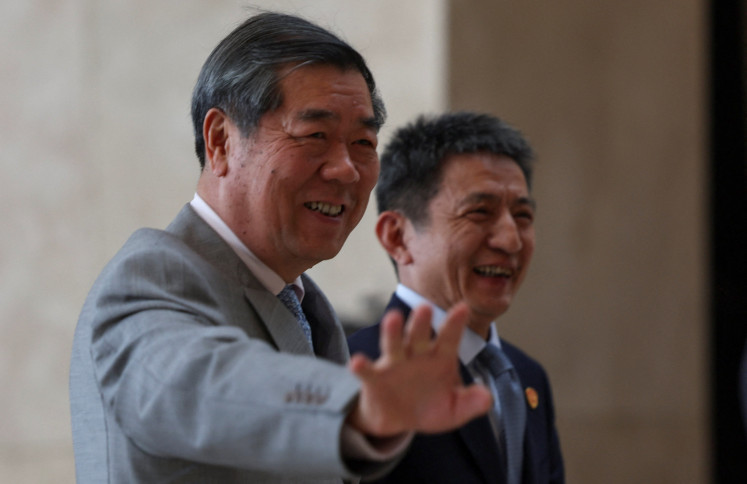Popular Reads
Top Results
Can't find what you're looking for?
View all search resultsPopular Reads
Top Results
Can't find what you're looking for?
View all search resultsRI’s electric vision still low on power
Inside a cramped alleyway in Kota Bambu Selatan, West Jakarta, an electric-charging station stands unnoticed among a row of small houses
Change text size
Gift Premium Articles
to Anyone
I
nside a cramped alleyway in Kota Bambu Selatan, West Jakarta, an electric-charging station stands unnoticed among a row of small houses.
Not many residents of the area know that the nondescript box is a charging station (SPLU) for electric vehicles.
The device is actually better known among street vendors.
“The charging station was meant to be used by sellers from the night market,” Lina, who lives across the charging station, told The Jakarta Post on Tuesday.
“It has been broken for a long time. The sellers used to charge their electronic devices there.”
These SPLUs are actually part of state-owned electricity firm PLN’s wider plan to cater to electric vehicles in Greater Jakarta.
However, low-emission cars and scooters have been slow to catch on in the capital, and the stations were turned into a public source of electricity.
“Such a facility exists?” asked Slamet Riyadi, a retired 60-year-old resident of Galur, Central Jakarta, who has been using an electric bicycle for two years. He said he had never heard of SPLUs.
“I always recharge my bike at home,” he added.
The government has envisioned Indonesia with 2.1 million electric motorcycles and 2,200 hybrid or electric cars on its roads by 2025, as mandated in Presidential Regulation (Perpres) No. 22/2017 on the national public energy plan.
The vision is based on Indonesia’s commitment to reduce greenhouse gas emissions by 29 percent by 2030, as stated in the United Nations Framework on Climate Change (UNFCCC) COP21.
PLN’s sales manager for Greater Jakarta, Leo Basuki, said the power company had installed 880 SPLUs in at least 16 of its working areas in Jakarta and the capital’s neighboring regencies to facilitate users of electric
vehicles.
“We plan to increase the number of SPLUs in Greater Jakarta to 1,000 by the end of this year,” he said.
He added that because the number of electric vehicles was still very limited, PLN had been encouraging the public, especially street vendors and gadget owners, to freely use the stations.
Anyone who needs to charge their electrical devices, he said, could easily find a nearby SPLU through Google Maps.
Leo explained that electric vehicles used only a small amount of electricity, which means their owners don’t have to spend a lot to charge them.
“For example, an electric scooter consumes about 2 kilowatt hours [kWh] for a 60-kilometer trip,” he said. “As 1 kWh costs only Rp 1,640 [12 US cents], its user will spend only Rp 3,280 for the trip.”
Owners could also charge their electric vehicles at home if their electricity meters had a capacity of at least 1,500 watts, he said.
“Our research team discovered that an electricity meter with a capacity of at least 2,200 watts can be used to recharge a light electric car,” Leo said, adding that such a car would require 20 to 25 kWhs for a 100-km trip.
He said people could also charge their vehicles or gadgets for free at SPLUs installed in PLN’s office compounds.
Association of Indonesian Automotive Manufacturers (Gaikindo) chairman Jongkie Sugiarto said Indonesia still had a long way to go before it would be able to realize its “electric” vision.
In addition to a lack of supporting facilities, like charging stations, potential buyers and producers require more incentives to invest in electric cars.
Almost every brand that produces hybrid cars exports them to Indonesia, but in very low numbers due to the country’s heavy luxury tax. A hybrid sedan, for example, is subject to 30 to 125 percent tax.
The Finance Ministry has revised a regulation on value added tax for luxury goods, lowering the taxes for electric vehicles to at least 10 percent. However, it has yet to take effect pending a regulation on low-carbon emission vehicles.
“Buyers need to be given incentives [such as lower taxes], so they would want to buy such cars. Or else, it would be hard to create demand, let alone create a production center here,” he said. (dpk)










